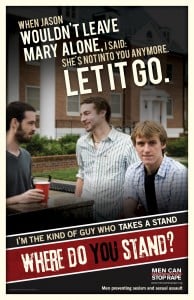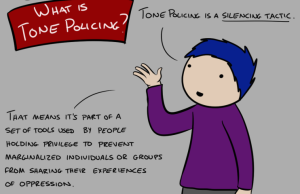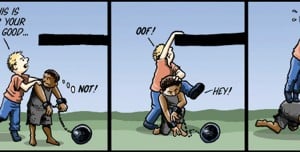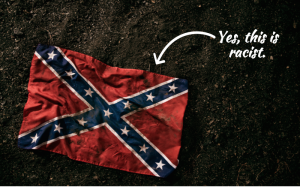Imagine being five and hearing stories from everyone around you about suffering the violence of being placed in la hielera – one of the worst forms of torture too often experienced by undocumented immigrants.
The hielera is a small immigration cell, where the AC is on at its highest temperature, so high that immigrants call it “the cooler.” And this is a torture that lingers. Often times, older immigrants that live through the hielera develop many bone-related health problems that decrease their lifespan, and most youth who live through the hielera develop complex PTSD.
I came to the United States at the age of five, undocumented, and was undocumented for almost seventeen years – and I lived in constant awareness of what dangers were looming the entire time.
As a community organizer, activist, and feminist myself, I have befriended many people that support the immigrant rights movement and are down with the politics.
However, because they do not face the everyday reality of living without a social security number – meaning no eligibility to legally work, get healthcare, loans, enter homeless shelters, or feel comfortable going to the police in cases of domestic abuse – allies often carry myths about undocumented immigrants that hurt both the immigrant rights movement and intersectional feminism.
Below are four myths that feminists and other allies must stop perpetuating in order to really support our movements.
Myth #1: Undocumented Youth Didn’t Come of Their Own Free Will
When I first started speaking out about my immigration status, I called myself a “DREAMer,” which is essentially a word that was given to me by politicians that wanted to pass a legislation titled the DREAM Act (2010).
This legislation would allow undocumented youth that entered the US before their sixteenth birthday and either joined the military, enrolled into higher education, or completed a certain amount of community service hours, a pathway to citizenship.
However, the narrative was that undocumented youth needed the DREAM Act because they weren’t brought on their own free will. Instead, their parent(s) brought them – further criminalizing undocumented parents.
At the time, I identified as a DREAMer because I benefited from the promises the legislation would bring. The identity in itself allotted me certain unearned privileges because they deemed my mother “other,” a “criminal.”
It wasn’t until later that I understood this form of oppression.
The truth is that, yes, it’s easy to claim that a five-year-old couldn’t possibly make the decision to move to another country, and successfully accomplish the move. But, the reality is, yes, that’s what happens.
At the age of five, I had already developed PTSD in my home country from an acute form of punishment for not “acting like a man.” In addition to this, there was an interfamily murder before I turned five that I was very well aware of.
So, yes, I came here on my own free will because I knew I would be safe.
Children have agency and when we accept legislations that take our agency away, we are actually hurting our own communities because the legislations do not reflect our realities.
Furthermore, the word “DREAMer” is a word loaded with privilege that is intertwined with classism and nationalism.
Although the legislation never passed, it was classist because shortly after it was introduced, politicians eliminated the community service option and the only two options left were to either join the military or enter higher education.
These pre-conditions actually required undocumented youth to risk their lives (once again) by joining the military or to enter higher education, meaning that only undocumented folk who came from a wealthy family or had legal status for a long time in the United States before becoming undocumented, would be able to enroll.
What we can do now is educate each other that we can’t privilege one undocumented reality more than others because the reality is that undocumented migration is attached to physical, emotional, psychological, and historical violence.
We cannot only advocate for undocumented youth. We need to advocate for all undocumented migrants and begin by focusing on the ones that legislations have already made “the other!”
Myth #2: All Undocumented People Cross the Border
Due to the media representing undocumented migration as people that cross the border, swim across a river (“wetback”), or walk through the desert, the public seems to believe that all undocumented people cross the border.
While many do cross the border, the low estimate is that 40% of undocumented immigrants actually fly to the United States with legal status, which does not account to the number of immigrants that drive to the United States with legal status as well.
Any non-US citizen can become undocumented.
Many times, immigrants are brought to the US with work visas, and sometimes their work visas are taken away because they are no longer needed, thus becoming undocumented. Other examples are international students who overstay their visa and become undocumented.
There are even legal permanent residents that lose residency due to misdemeanors, or being political activists in the United States.
But how is this myth hurtful if it seems more like a misinterpretation?
By framing the undocumented reality as a journey across a border, we begin to fictionalize undocumented experiences into a Hollywood-like action film. This very action story is what a lot of my feminist and activist communities narrate to politicians as a strategy to appeal to their emotions, but it’s more like exploitation of severely traumatic realities.
In thinking that all undocumented immigrants cross the border, we become less likely to challenge US immigration law.
This is because we assume that all the violence is happening at the border and don’t question times when workers (nail salon workers, farm workers, garment workers, and so on) are brought on visas and then held as slave labor.
Employers threaten workers if they ask for a living wage by taking away their visa (their sponsorship), thus forcing them to become undocumented. It also works the other way around: Undocumented workers are sometimes forced to work in inhumane conditions, and if they resist, they are threatened with deportation.
Assuming that all undocumented migrants cross the border distances us from engaging in critical conversations about the intersection of migration and the history of slavery (and Blackness, thereof) in the United States, as well as the ways in which we participate in a culture of xenophobia.
Myth #3: All Undocumented Immigrants Are Latinxs
Because México is our bordering country, and the United States has had many laws passed in regards to the US/Mexican border, our point of reference of an immigrant is a brown-skinned Mexican individual.
Much of this myth is due to the rising Latinx community in the United States that is estimated to be the majority in the near future, which is already representative of states like California, where Latinxs outnumber Whites.
Although Latinxs are increasing in numbers, we need to realize that there are undocumented immigrants living in the United States from all over the world – including the European Union, Africa, the Middle East, the Caribbean, and Australia (not just México or Latin America).
In 2012 (I know, a little outdated, but that’s what happens to marginalized communities), the PEW research center estimated that there were 1.4 million undocumented Asians living in the United States, 600,000 undocumented European and Canadians, 400,000 from Africa and the Middle East, and 550,000 from the Caribbean. The larger population of undocumented migrants hail from the Americas (about twenty countries).
By thinking of undocumented migration as a Latinx issue, we silence those that come from other countries and prevent inter-undocumented solidarity.
At the moment, the undocumented Latinx movement and the undocumented Asian Pacific Islander (but mainly East Asian, and not so much Southeast Asian or Pacific Islander) movement have had a good amount of publicity and support.
However, because we have consumed a narrative of immigration as a Latinx issue, undocumented communities themselves and their allies have been unable to make connections of migration as an intersectional issue.
As a Black Latinx that was undocumented for almost seventeen years, I struggled myself to understand the ways in which my Blackness intersected with my undocumented status.
The reality is that Black people in the US have been stateless ever since slavery, laws that made us three-fifths human, segregation, and so on. So, for me, as an undocumented and Black migrant, I had to look to the history of Blackness in the US, which meant the one-drop rule, widening my understanding of what a Black person was compared to Blackness in my home country.
Not only was it difficult to understand how Blackness and undocumented-ness intersected, but I also felt left out because my reflection was never represented in art created about the undocumented movement.
For example, being in an immigration protest, most signs were always either in Spanish and English, and there were never any physically Black people represented in our posters. Along with this, since our messages were always in Spanglish, we, as an undocumented community, were not creating a space for other non-Spanish-speaking undocumented immigrants to be included.
To put it simply, imagining immigration as a Latinx issue prevents us from practicing intersectional feminism, because at the moment, immigration narratives are so binary that we are unable to intersect speaking about issues of Blackness, issues about land, and issues about geographic location.
Myth #4: Undocumented Immigrants Are Stealing American Jobs
Who hasn’t heard that one?
For the seventeen years that I’ve been in the United States, the myth about undocumented immigrants taking American jobs was one I heard almost every week.
When in high school, I remember once having a class conversation about immigration, and my counterpart classmates arguing that we needed to “put them in a box and ship them back to where they came from” because they were “stealing our jobs” (“our” clearly didn’t include me).
The reality is that undocumented labor in the United States “raises wages for documented/native workers” because undocumented workers, since they are not “legally” allowed to work without a social security number, often enough end in low-skill job positions – even if they have college degrees or extraordinary abilities.
In addition, since undocumented workers often have family members that can help them out filing for taxes, undocumented workers “pay between $90 and $140 billion a year in federal, state, and local taxes.”
One of the most shocking news I found out in 2011 was that when anti-immigrant laws began to be implemented state by state, many of the biggest farms in the United States were left with their crops rotting because undocumented workers either left or were deported.
When this happened, US citizens did not want to take over those jobs. The situation got so intense that the local government sent US citizens that were on parole to work the fields and most walked out.
So, if US citizens don’t want these jobs because the conditions are so severe, how are undocumented immigrants stealing jobs that no one is taking?
Undocumented workers in the United States grow our food, sanitize the public spaces we visit, raise US-born White children, construct homes, work as independent artists, and have started our own businesses.
In my own feminist circles I often got the question, “How do/did you work?” And to answer it simply, I just did, but for less than minimum wage, and little to no workers’ protection.
The most common and unintentional way in which this myth has been carried through is that we sometimes assume that immigrants live glorious lifestyles. We do this because many immigrants work one or two full time jobs, plus one or two additional part time jobs to make ends meet, which is how people in my family have lived ever since we got here.
Because we manage to survive, people assume that our survival is a result of stealing “American” jobs, when in reality we are working so much, that we are just surviving, not living.
***
Although these are only four of the many myths about undocumented immigration, it is important that as feminists and people trying to partake in actions of allyship, we take a moment to understand what it means to have a social security number, a blue passport, a green card, a visa, or anything that allows us to claim “documentation.”
We need to create a culture that challenges narratives of migration, and ask “How did people become undocumented?” instead of “What are we going to do with the undocumented?”
Only through understanding the historical and contemporary realities of undocumented people can we become better advocates for those marginalized by our broken immigration system.
[do_widget id=”text-101″]
Alan Pelaez Lopez is an Afro-Indigenous migrant that grew up in Boston via La Ciudad de México, documenting their existence as an (un)docuqueer poet, jewelry designer, and a huge Frida Kahlo fan. Alan is currently in graduate school pursuing a degree in Comparative Ethnic Studies in the Bay Area, and a member of Familia: Trans, Queer Liberation Movement.
Search our 3000+ articles!
Read our articles about:
Our online racial justice training
Used by hundreds of universities, non-profits, and businesses.
Click to learn more





















